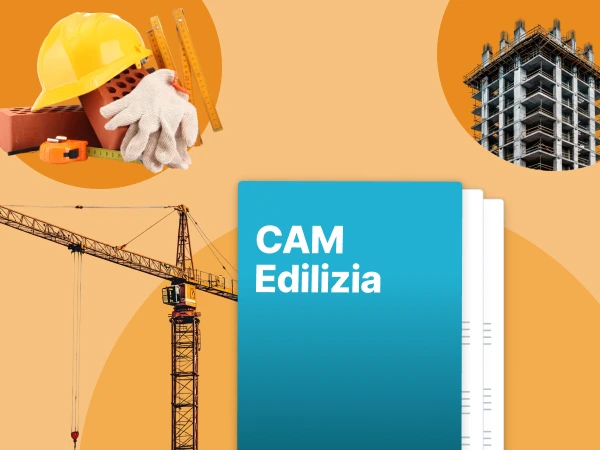To purchaseCO2 , one can refer to two different markets, one compulsory and one voluntary. Only through the second one can you offset your emissions and become carbon neutral. The markets are as follows:
- the compliance market, on which emission rights are sold to companies in certain sectors, which are obliged to comply with an emission ceiling set by the institutions;
- the voluntary market, for those who freely choose to offset emissions emitted through the purchase of carbon credits.
Let's see in this article what this is all about, and what theCO2 prices are for each.
The Voluntary Carbon Market
Voluntary Carbon Market (VCM) is defined as the market for carbon credits that allows companies to voluntarily offset their CO₂ emissions, thus going to mitigate their impact on global warming.
Calculating the carbon footprint and translating it into a quantifiable number, expressed in CO₂ equivalent, helps companies know the extent of their environmental impact and the source of their emissions.
By quantifying the effect of one's business activities, one can later offset, through the purchase of carbon credits, the climate-changing gases produced.
What is it all about? How do you practice offsetting your own emissions?
Carbon credits, or carbon credits, are tools that track the CO₂ absorbed/avoided through certified projects. They allow the exact quantification of kilograms of carbon dioxide purchased, creating a market that aims to balance the effects of climate change by funding projects around the world.
Carbon credits are thus a tool that tracks the amount of greenhouse gases being balanced through offsetting activities accomplished through certified CO₂ removal/non-emission projects in the atmosphere. The two major bodies globally that are responsible for certifying the reliability of these projects are Verra and Gold Standard.
The European Union Emissions Trading System
The European Union Emissions Trading System, commonly known as the ETS, is a cap-and-trade system created to place limits on emissions of climate-altering gases by European companies in specific sectors. Companies covered by this scheme are responsible for about 45 percent of total emissions in the entire European Union and cover the aviation, fossil fuel combustion plants, and emissions-intensive industries sectors.
The bonds that certify emissions are called EUAs (Emission Unit Allowances), each individual EUA representing an emission allowance equal to 1 ton ofCO2.
Each company is annually assigned a number of EUAs equal to its "cap," i.e., its maximum emission level. At the end of the year, each company will have to hold a number of EUAs equal to its emissions. For example, a company with a "cap" of 1,000 tons ofCO2 will need to hold 1,000 EUAs. This company, should it exceed the emission "cap" of 1,000 tons ofCO2 will have to purchase additional EUAs so as to fall within the predetermined parameters. Otherwise, that is, when the company's emissions are below the imposed limit, the excess EUAs can be liquidated on the secondary market, generating a profit.
There are two ways to purchase EUA:
- Participating in periodic auctions;
- buying the securities on the secondary market.
Companies that fail to comply with this scheme receive heavy fines.
What is the price difference between carbon credits and EUAs
Carbon credits have different pricing, for example, depending on the type of project, vintage (vintage of the carbon credit, thus the year in which theCO2 was removed from the atmosphere) or certification, the price level varies greatly. Indeed, it is possible to find carbon credits with outdated certifications and very backward vintage (carbon credits generated more than 15 years ago are still available) even around ten euros per ton. Up2You has developed its own rating that aims to assess the quality of offset projects in order to always ensure the highest quality for its clients. These projects do not meet the minimum threshold necessary to be part of Up2You's project portfolio.
The situation changes for Verra or Gold Standard certified projects with a more recent vintage. For example, nature-based forest protection projects (REDD+) can reach between 40 and 60 euros/ton for transactions in the thousands of tons range.
Among the most expensive credits are usually those from carbon removal projects, as these ensure the removal ofCO2 from the atmosphere, which is considered by some frameworks to be "more valuable" than no upstream emission/reduction. An example of carbon removal projects are large-scale reforestation activities, which through the planting of trees, allow for the capture of carbon dioxide.
A project falling into this category can exceed 60 euros per ton.
Also among the carbon removal projects, we find blue carbon, or credits from the protection and development of coastal ecosystems, aimed at improving waters and safeguarding the marine spiecies that live there. Since there are very few such projects, blue carbon is among the most expensive in theCO2 market, costing as much as more than 90 euros per ton.
All price references given in this article are closely related to the historical moment in time when it was written. As more and more companies are interested in offsetting their emissions, the price ofCO2 is also rising steadily. Embarking on a decarbonization pathway in the company right now could therefore be beneficial in economic, as well as social and environmental terms, to anticipate price increases.
In addition, the prices shown refer to the purchase of large quantities of credits, this implies proportionately lower costs.
The discourse changes for the ETS, each EUA has the same characteristics and consequently assumes a unique price (there is no difference as with the voluntary market where a forest preservation project may be valued by a reduction technology project). The exchange of EUAs is possible thanks to the regulated markets, during 2022 there has been an increase in the value of these securities, if at the beginning of 2022 the price of 1 EUA was around 70 euros, in December 2002 it exceeded 85 euros, an increase of almost 20%. However, this growth is indicative of the macro trend of rising costs associated with decarbonization.
Can a company that buys EUAs be called carbon neutral?
At this point the question arises whether a company obliged to purchase EUAs can call itself carbon neutral. Climate neutrality is only achieved by offsetting its emissions through the purchase of carbon credits (voluntary market), or by supporting certified carbon offset projects (carbon offsetting).
The ETS does not fall into this category; this scheme was implemented solely to tax European companies that contribute the most to greenhouse gas emissions. However, it is noteworthy that revenues obtained from the ETS are reinvested in climate change initiatives.
The only way to achieve carbon neutrality is therefore through the purchase of carbon credits. These credits can be generated by different kinds of projects, such as the aforementioned forest preservation or reforestation projects. However, this should not confuse us with other initiatives, such as planting trees. While they generate (if done correctly) environmental benefits, they in no way allow a company to achieve carbon neutrality.
Compensation according to Up2You
All projects available in Up2You's portfolio have Verra or Gold Standard certification, the two most widely used and accredited international bodies for developing and managing carbon credits, and have passed the threshold quality rating through a proprietary methodology defined within the Up2You Carbon Offsetting Standard.
Our projects not only capture or avoidCO2 leakage, but also generate countless co-benefits to local communities by contributing to the achievement of countless Sustainable Development Goals (SDGs). In addition, Up2You makes careful selection through individual project rating methodologies to ensure the highest level of quality for our clients.
Visit our virtual Registry to find out which Italian and international companies have already earned our carbon credits, or check out our projects page to find out about Up2You's thematic offsetting packages.






























